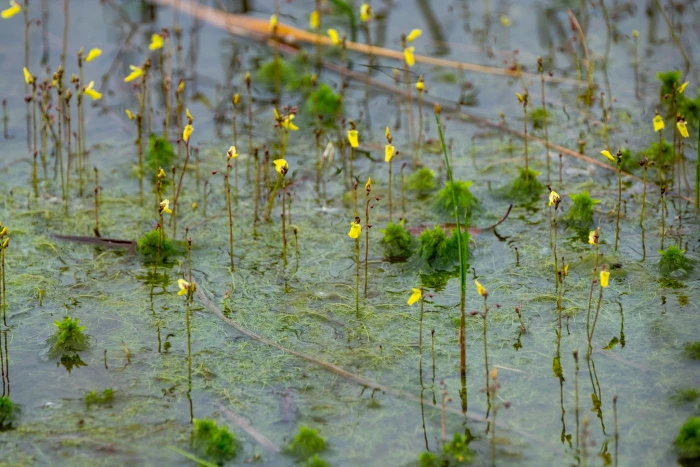Lesser Bladderwort
(Utricularia minor)
Lesser Bladderwort (Utricularia minor)
/
/

Shawn O'Donnell
CC BY 4.0
Image By:
Shawn O'Donnell
Recorded By:
Copyright:
CC BY 4.0
Copyright Notice:
Photo by: Shawn O'Donnell | License Type: CC BY 4.0 | License URL: http://creativecommons.org/licenses/by/4.0/ | Rights Holder: Shawn O'Donnell | Publisher: iNaturalist | Date Created: 2019-08-11T14:01:54-07:00 |

























Estimated Native Range
Climate Requirements
| • Precipitation | 2" - 138" |
| • High Temp. | 44°F - 104°F |
| • Low Temp. | -50°F - 55°F |
Summary
Utricularia minor, commonly known as lesser bladderwort, is a small perennial carnivorous plant with a circumboreal distribution, found in North America, Asia, and Europe. It is native to nutrient-poor, acidic wetlands including bogs, fens, and shallow lakes, often affixed to the substrate but can also survive free-floating. Lesser bladderwort is notable for its underwater bladder traps that capture small aquatic organisms, contributing to its survival in nutrient-deficient environments. The plant features delicate, yellow flowers that appear above the water surface from late spring to early summer, adding a subtle charm to aquatic settings.
In cultivation, lesser bladderwort is valued for its unique carnivorous habit and its ability to help control mosquito larvae and other waterborne pests in natural ponds and water gardens. It requires full sun to part shade, consistently moist or even submerged conditions, and an acidic pH to thrive. While it is not commonly used in traditional garden settings due to its specific requirements, it is a fascinating addition to specialized water features. Gardeners should be aware that Utricularia minor can spread rapidly under ideal conditions, potentially becoming dominant in small water bodies.CC BY-SA 4.0
In cultivation, lesser bladderwort is valued for its unique carnivorous habit and its ability to help control mosquito larvae and other waterborne pests in natural ponds and water gardens. It requires full sun to part shade, consistently moist or even submerged conditions, and an acidic pH to thrive. While it is not commonly used in traditional garden settings due to its specific requirements, it is a fascinating addition to specialized water features. Gardeners should be aware that Utricularia minor can spread rapidly under ideal conditions, potentially becoming dominant in small water bodies.CC BY-SA 4.0
Plant Description
- Plant Type: Herb
- Height: 0.25-0.8 feet
- Width: 0.25-0.25 feet
- Growth Rate: Rapid
- Flower Color: Yellow
- Flowering Season: Summer
- Leaf Retention: Deciduous
Growth Requirements
- Sun: Full Sun, Part Shade
- Water: High
- Drainage: Standing
Common Uses
Low Maintenance, Water Garden
Natural Habitat
Native to nutrient-poor, acidic wetlands including bogs, fens, and shallow lakes
Other Names
Common Names: Small Bladderwort
Scientific Names: Utricularia minor, Lentibularia minor, Utricularia dubia var. macroptera, Utricularia macroptera, Utricularia macroptera, Utricularia minor f. aquatilis, Utricularia minor f. brevipedicellata, Utricularia minor f. gracilis, Utricularia minor f. major
GBIF Accepted Name: Utricularia minor